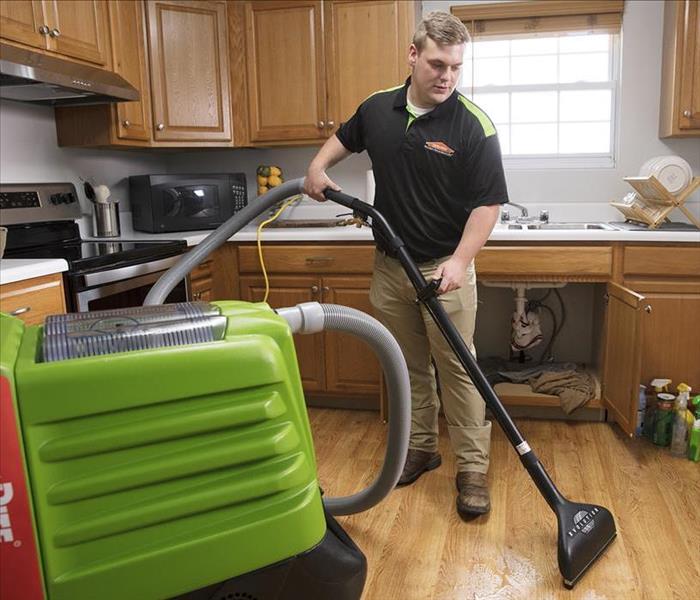The Difference Between Water Mitigation and Damage Restoration
5/31/2022 (Permalink)
 There is sometimes confusion and misunderstanding between water mitigation and restoration companies.
There is sometimes confusion and misunderstanding between water mitigation and restoration companies.
Nobody ever thinks they will be involved in a water damage incident, but once the unfortunate happens, how do you know whom to call? There is sometimes confusion and misunderstanding between water mitigation and restoration companies. In this article, we'll cover the differences between the two types of services and clarify exactly who should take care of what part.
What is water mitigation?
Water mitigation is the process of stopping or slowing the spread of water through a building so that it can be dried out without causing further damage to property or home contents. If you have experienced flooding in your home or business, it’s important to contact an experienced professional as soon as possible. Quick response ensures that your property is properly dried out and restored before irreparable damage occurs.
What are the pros of water mitigation?
It reduces the risk of damage to property and contents. If there's no water in your home or office, then there's no risk of mold growth.
It prevents further damage to property and contents like furniture, carpeting, and electronics if they're still salvageable after water removal.
What are the cons of water mitigation?
The downside of using a water mitigation company is that it can be expensive. If there's not much damage, then hiring a company may not be necessary. If there is extensive damage and mold growth, then using one could save you money in the long run by preventing further damage and needing further repairs down the road.
What is water damage restoration?
Damage restoration is the process of repairing the structural damage caused by water intrusion. Damage restoration professionals are trained in drying out your property while also making structural repairs to return your home or business back to its original state. Damage restoration can include removing wet carpeting, wallboard, insulation, sheetrock, and other materials that have been damaged by water intrusion.
What are the pros of water damage?
Water removal: When a flood happens, it's important that all water be removed immediately. If not, then mold and mildew can start growing within 24-48 hours after the event occurs. A professional team of water damage restoration experts will have equipment on hand to help them suck out all standing water from your property so that they can begin drying it out right away
Drying out your property: After the standing water has been removed, it's time for drying out your property. This is one of the most important steps when dealing with any kind of flood because it eliminates any remaining moisture still present in your home or business.
What are the cons of water damage?
The main disadvantage of hiring a professional team is that it can be expensive. Depending on how much work needs to be done, you could end up spending thousands of dollars on the repairs alone.
What is the difference between water mitigation and damage restoration?
The main difference between water mitigation and restoration is that mitigation focuses on stopping further damage to your property, while restoration focuses on repairing the damage that has already occurred. Mitigation may require sealing off areas that have been damaged, removing damaged materials from the site, drying out wet surfaces, and performing other tasks.
Restoration may involve cleaning up any remaining debris left over from the flood, replacing flooring and insulation where necessary, repairing holes in walls or ceilings caused by water damage, painting over any damage done by moisture stains on walls, and ceilings, installing new drywall to replace old damaged drywalls if necessary.
As you can see, the two terms are very similar and can often be used interchangeably. But generally speaking, there is a difference. Hopefully, this post has provided you with a better understanding of the distinction between water mitigation and damage restoration services.
SERVPRO of Winter Park has the knowledge and capabilities of handling both sides of the water damage process. Please call our office for questions regarding our services!





 24/7 Emergency Service
24/7 Emergency Service